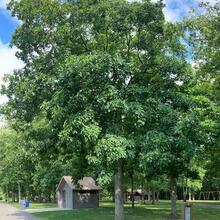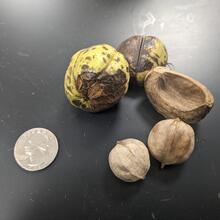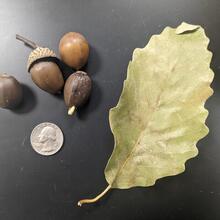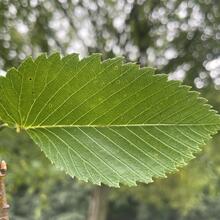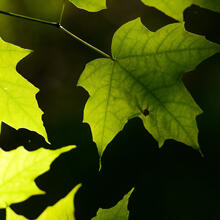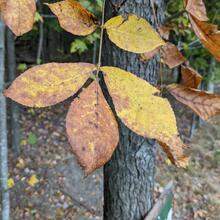Carya ovata
Juglandaceae
Shaggy bark that peels in long, thick strips. Prefers soil with humus/organic material. Produces large quantity of nuts in fall. Structurally stable branches that withstand winds.
Summary
 Climate Tolerance
Climate Tolerance
Fair
Wildlife Benefits
Nuts food source for mammals, gamebirds; roosting site for Indiana bats; moth/butterfly host; insect host, attracts woodpeckers
Pollination Type
Wind
Plant Hardiness Zones
4 to 8
# Butterfly/Moths that use as host
231
Bloom Time
Spring (Mar-Jun)
 Shade/Sun Tolerance
Shade/Sun Tolerance
Full Sun to Shade: Receives less than 2 to 6 or more hours of direct sunlight
 Maximum Height
Maximum Height
Large (75-100 ft)
 Growth Rate
Growth Rate
Slow: 1 ft or less per year
 Soil Type
Soil Type
Clay: Small sized particles. Long moisture retention and low nutrient availability.
Loam: Equal mix of clay, sand, and silt. Moderate moisture retention and high nutrient availability.
Sand: Large/coarse particles. Short moisture retention and low nutrient availability.
Silt: Medium sized particles. Moderate moisture retention and high nutrient availability.
 Soil Moisture Tolerance
Soil Moisture Tolerance
Moist - Dry: Soil can be damp for periods of time and can retain little to no water for periods of time
Root - Fungal Association
Ectomycorrhizae: Symbiotic relationship with fungi that exist on outside of plant root cells, facilitating nutrient uptake
Pest & Pathogen Risks
Very Low
 Urban Stress Tolerance
Urban Stress Tolerance
High: Tree can adapt to a variety of urban conditions and will grow well
Drought Tolerance
Tolerant: Tree will not become stressed during periods of drought
Coefficient of Conservatism
6
Native Status
OH-Native: Species is native to Ohio
NatureServe G-rank
G5
Plant Community Type
- Beech Mixed: Occasional
- Oak Mixed: Common
- Alluvial: Rare
- Red Maple Mixed: Occasional
- Ruderal: Rare
- Urban Tree Cover: Common
Bloom Color
Yellow
Form
Tree
 Lifespan
Lifespan
Long: Greater than 250 years
Soil pH
Acidic (pH<6.8)
Wetland Indicator Status
FACU: Facultative Upland, usually occurs in non-wetlands, but may occur in wetlands
Soil Compaction Tolerance
Tolerant: Tree will not become stressed from soil being compacted
Heat Tolerance
Tolerant: Tree will not become stressed for increased temperature due to urban heat island effects
Salt Tolerant
Tolerant to Salt in Soil: Tree will not become stressed when salt is present in soil
Native County Status
Cuyahoga
Geauga
Lake
Lorain
Medina
Portage
Summit
IUCN Red List Assessment
Least Concern
